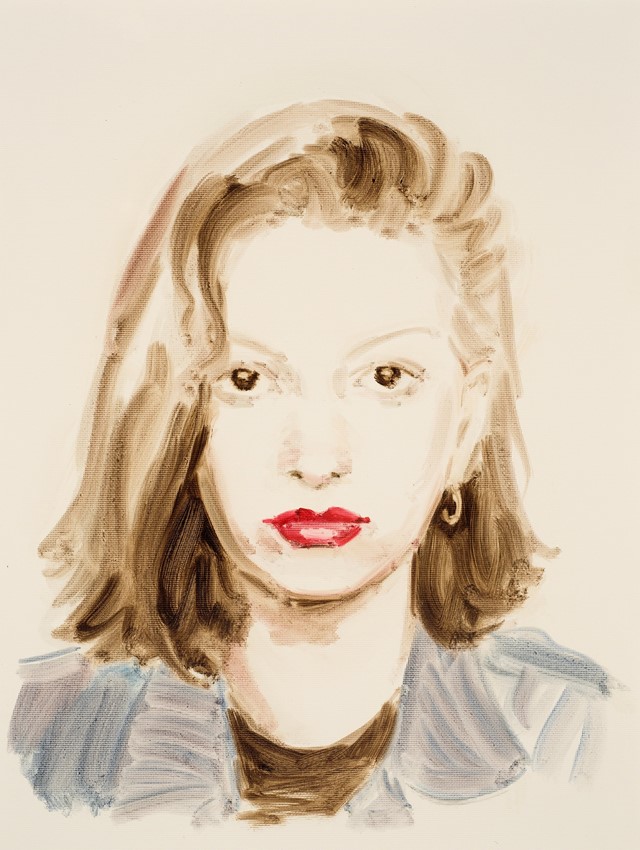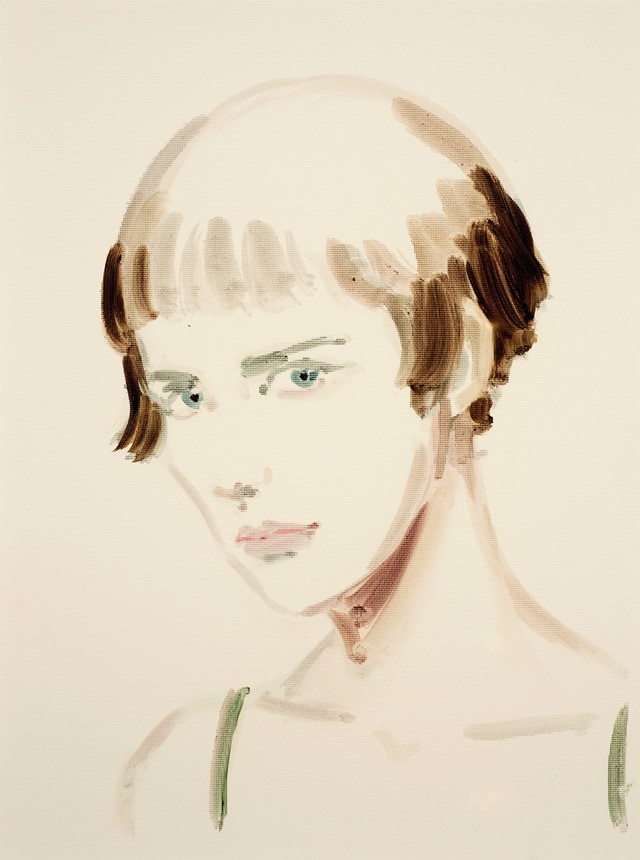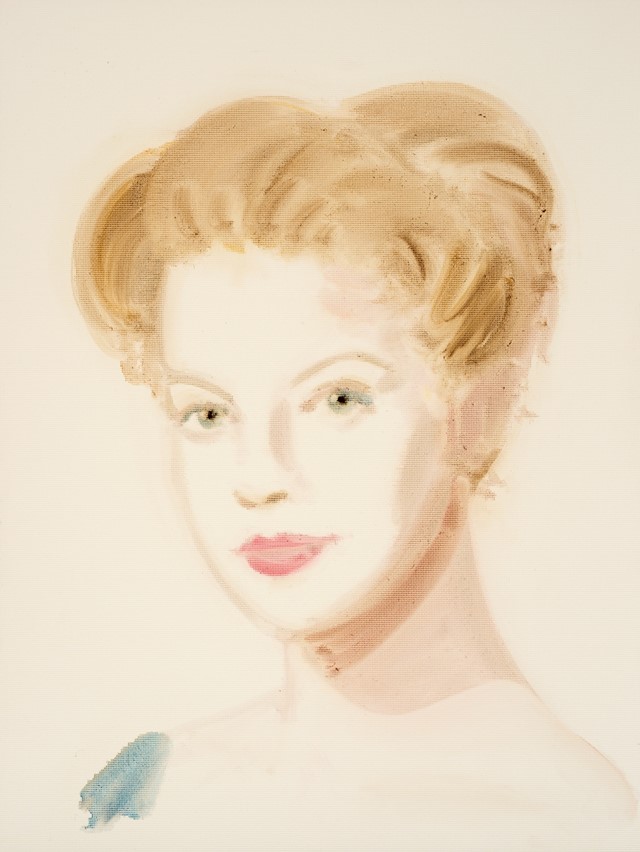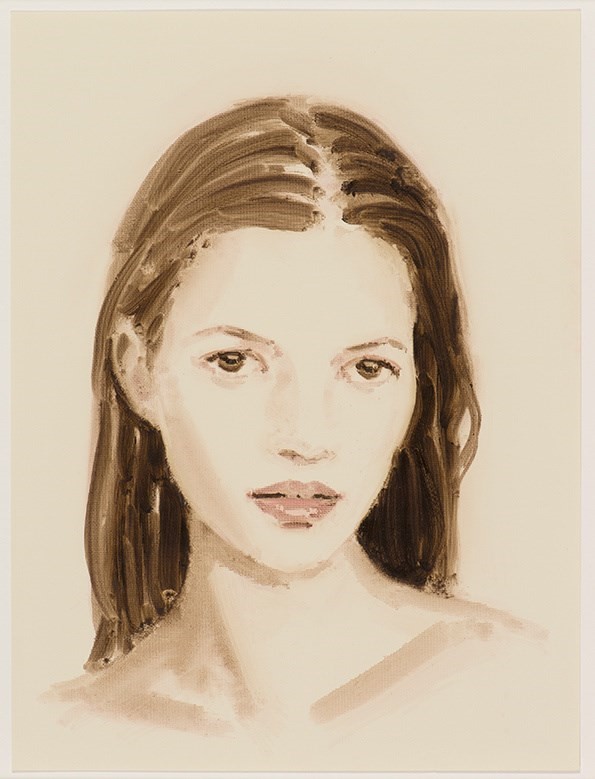Madeleine Morley talks to the London-based creative about her unique practice as a showcase of her beguiling works opens in Edinburgh
The faces that emerge from the beige surfaces of Annie Kevans’ paintings peer out at you with an intense sense of familiarity; they appear from their background like a recalled memory stepping out from the fog of the forgotten. Despite the feeling of recognition that is so palpable when you look at these pictures, a lot of the people depicted by the artist's quick hand and soft brushstrokes – although based on recognisable figures – have been drawn entirely by memory. The authority of her portrait set-ups is deceiving.
Kevans’ paintings reveal alternative histories; they use evocative and provocative themes to shed light on the unremembered and the deliberately ignored. Her wispy renderings expose those that have been left out from collective memory, and reveal the sides of celebrities and famed figures that have become mere footnotes or disregarded facts.
In 2004 her first series, completed for her BA degree show at London's Central Saint Martins, named Boys, and bought in its entirety by Charles Saatchi, Kevans depicted dictators and war criminals as young children. A few years later Girls dealt with the sexualisation of children through the portrayal of numerous child stars; these paintings were an unsettling contrast of purity and corruption. A sequence of drawings of presidential mistresses, of women in the history of art, and a commissioned set delineating the muses of Jean Paul Gaultier also continue to explore the notions of reputation, truth and fabrication through the subversion of our expectations of the portrait genre.
It’s not a single work that is important to Kevans, but the idea that binds a set together. Now, for the first time, a number of her paintings from different series are being showcased collectively at The Fine Art Society in Edinburgh, in an exhibition titled Annie Kevans: Selected Portraits, providing a holistic overview of her oeuvre. Kevans tells us more...

On portraiture…
"I don’t paint portraits. When people ask me what kind of work I do, I say that the work looks like portraits but they’re not portraits at all. I describe them as anti-portraits. I use people’s familiarity with portraiture to convince them of something. The public is used to accepting when they see a portrait that it is a true likeness of a person, so that’s why I frequently do series where I don’t have the source material available and I don’t know what the person looks like. By then putting this into the context of the gallery, people just assume that it’s real and what a person looks like.
I look at themes or concepts or ideas. I start with an idea first and then when I research people that fit into the category I’m working on, it means that people get painted by chance. There is no contact with a sitter. Sometimes the people that I draw are irrelevant: for example, with the first series I did called Boys, where I depicted dictators as little boys, only eight of the 30 works were based on real photos.
It doesn’t matter though, because when you look at one of the paintings you think it’s real, so the emotion that you have is the same as if it was real. That’s how it all started. Boys gave me such freedom because I could do all sorts of portraits without really getting bogged down in how people looked. This is a different style of painting and I love the freedom you get from not worrying about what someone really looks like; it makes it more fluid and free."
On reputations…
"When I depict celebrities, it’s often because people are familiar with what they represent. When I paint someone like Monica Lewinsky, it’s because of what she’s known for. Other times, I purposefully look at celebrities for what they are not known for. For example, for the series I painted of Nazi collaborators, I depicted Coco Chanel, because she was actually a Nazi spy with a code name, which a lot of people don’t expect even though it has been documented.
A lot of the time, I look at people reinventing themselves or being known for something in their lifetime and then being known for something else after their death. I’m interested in reputation and how it's preserved and transformed by others. I looked at this again for a series called Manumission, which depicted the children that US presidents had with slaves, I was looking particularly at Thomas Jefferson. He’s seen as such an icon in America of freedom, and yet he kept his own children as slaves. It’s very strange and I often wonder why people don’t care? Why can't people except the truth?"

On correcting history and readdressing the gender balance…
"With my Women in Art History series, there were quite a few full-blown rows on the Internet about it. There were lots of trolls saying ‘There’s no famous women artists because they were no good’. But people are refusing to accept the real history because they’ve been brainwashed, and I try and hope to shed a bit of light on things.
People often think there were just a handful of women artists and they were somehow freakish and operating in a bubble, but it’s not at all true. It’s irritating that all these films get made of the male genius artists, and the women in these films are always simpering muses. I wish someone would do a Hollywood film about all the female artists at a certain time in Paris for example.
At the Louvre, there used to be all sort of artists studios inside, and there were a lot of women working there too. They were successful, they had waiting lists as long as your arms, they travelled all around the world, they had assistants, they made loads of money. People often can’t believe it, the kind of people who have spent 30 years going to galleries and museums. It’s just so sad and I have no idea how we’re ever going to readdress that."
On history repeating itself…
"History is repeating and repeating and human beings are not really evolving very much, or at least not very intelligently. I suppose the whole idea behind a lot of the series that I paint is that history just repeats. When I’m 70, if I’m still around, I’ll probably be painting the new sexualised child stars, just like I did with the Girls series.
When I did the Presidents’ Mistresses series, I found out that every single President had a mistress, except for a handful. When I started, I knew the famous ones and thought there might be five in total. After researching though I realized that literally every single President had a mistress. The Monica Lewinsky story is nothing new, it’s simply as old as when Presidents began."

Annie Kevans: Selected Portraits runs until September 3, 2016 at The Fine Art Society in Edinburgh.
